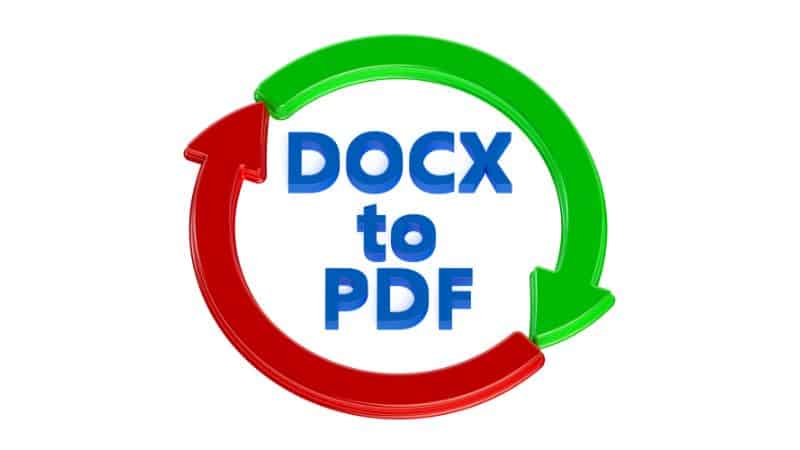How To Convert A Word Document To PDF

Table of Contents
PDFs allow users to share documents among multiple parties without the document being changed or altered.
Instead of creating a document as a PDF, most prefer to create a document in another format, and convert to PDF. In this guide, we'll cover the methods used for this simple process.
How To Convert A Word Document To PDF On A Desktop
When using the desktop version of Microsoft Word, the quickest way to convert the document to a PDF is via word. This is true for both Windows PC and Mac users.
To convert a Word document to PDF using the desktop version of Word:
Step
Select File Tab
On the document you wish to convert, select the File tab. This will take you to another screen.
Step
Save As
Click on Save As.
Step
Select Where To Save File
Select where you want the document to be saved as a PDF. This can be anywhere you would normally save a Word *.docx or .doc.
As the PDF is a different file to a saved Word document, you can save the PDF and original *.docx in the same file.
Step
Save File As PDF
A Save As Type dialog box will open, with a dropdown menu. Word will automatically try to save the file as *.docx.
Select the arrow on the dropdown menu, and then select PDF (*.pdf). This is also an opportunity to change the file name.
Step
Save
Select Save.
Your file will now be automatically saved as a PDF. Microsoft Word will return you to the original Word document, and the saved PDF will open in your chosen PDF viewer.
The same system can be used on both Mac and Windows PC devices, although the layout of the Save As dialog box will be different.
How To Convert A Word Document To PDF Using Google Drive
An alternative method for converting a Word document to a PDF is using Google Drive.
To convert a Word document to PDF using Google Drive:
Step
Open Google Drive
Open Google Drive on your chosen web browser. You may need to log into your Google account at this point, if you aren't already logged in.
Step
Open File Explorer / File Finder
Click +New in the top-left of the Google Drive page. This will open a drop-down menu. Select File Upload. On a Windows PC, this will open File Explorer. On a Mac, it will open Finder.
Step
Select Document
Navigate to the location of your chosen Word document. Select the document, and click either Open, or Choose (depending on if you're using a Mac or PC).
Step
Open Document
Your Word document will now upload to Google Drive. Once it's finished uploading, double-click the document to open in your browser.
Step
Click ‘File’
On the menu bar, click File. This will open a drop-down menu.
Step
Select ‘Download As’
Select Download As, and a pop-out menu will appear.
Step
Click PDF Document
Click PDF Document (.pdf). A PDF version of your document will now begin to download to the computer. You may need to confirm the download.
Other Options For Converting A Word Document To PDF
Converting using the desktop version of Word is the best way to change a Word document to a PDF while maintaining even complex formatting.
Google Drive is a good tool for converting simple documents, and can be a quick method for those who already have a Google account.
Another option is to use a PDF converting website. These can be used for free or at a small cost. Some options include:
- SmallPDF.com
- FreePDFToConvert.com
- PDF2Go.com
- Or open-source office apps such as LibreOffice.org
Conclusion
There are multiple ways to convert a Microsoft Word document to PDF. The easiest method is to use the desktop version of Microsoft Word.
However, if you don't have the desktop application, Google Drive and converting websites offer a free and simple tool.
